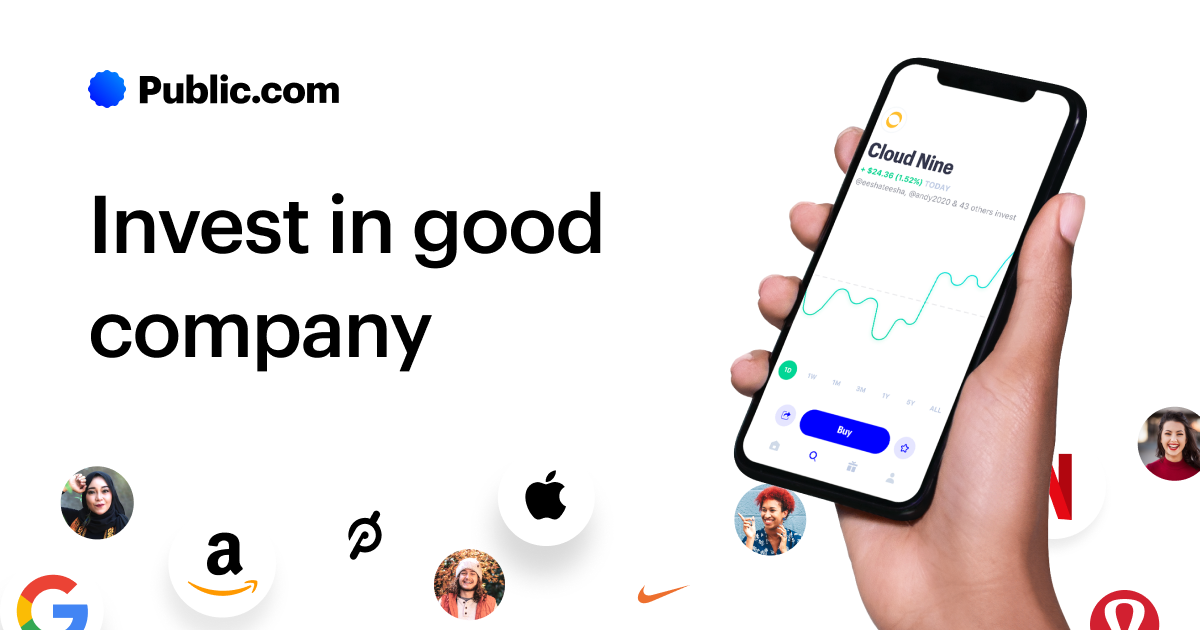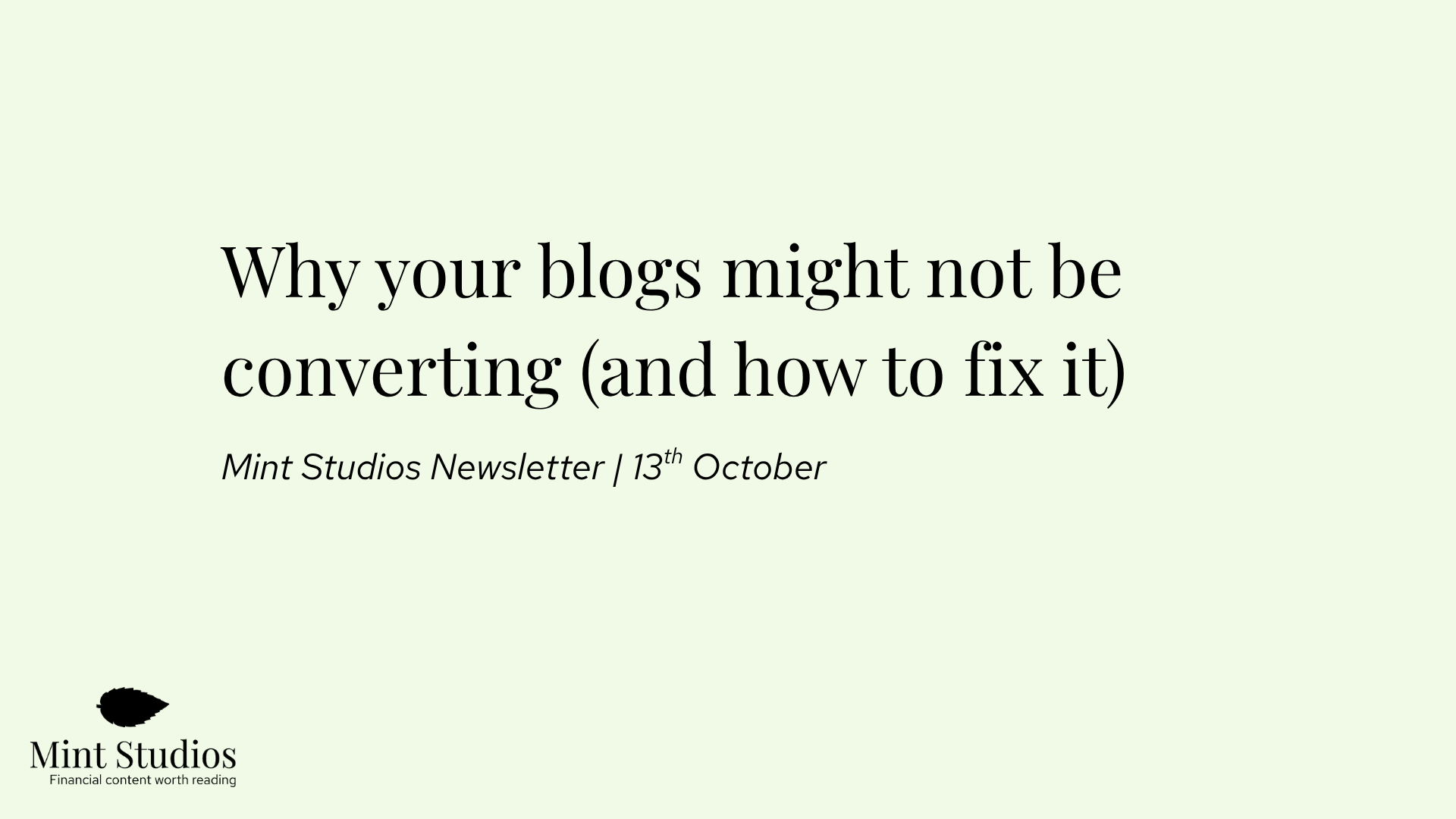Leif Abraham didn’t start investing until he was over 30 years old. Years later, he still wakes up every morning kicking himself because he didn’t start earlier.
The stock market is still the most reliable way to grow your wealth over time, even when compared to other assets like gold, property, fine art and cryptocurrencies. Decade after decade, the stock market helps everyday citizens protect their savings against inflation and build nest eggs for retirement.
Sadly, most people are not taking part in the most powerful wealth generator known to humans because it’s either too expensive, too confusing, or doesn’t seem to be for them.
In September 2019, Jannick Malling and Leif Abraham launched an investing app, Public.com, and embarked on a mission to make the public markets work for all people.
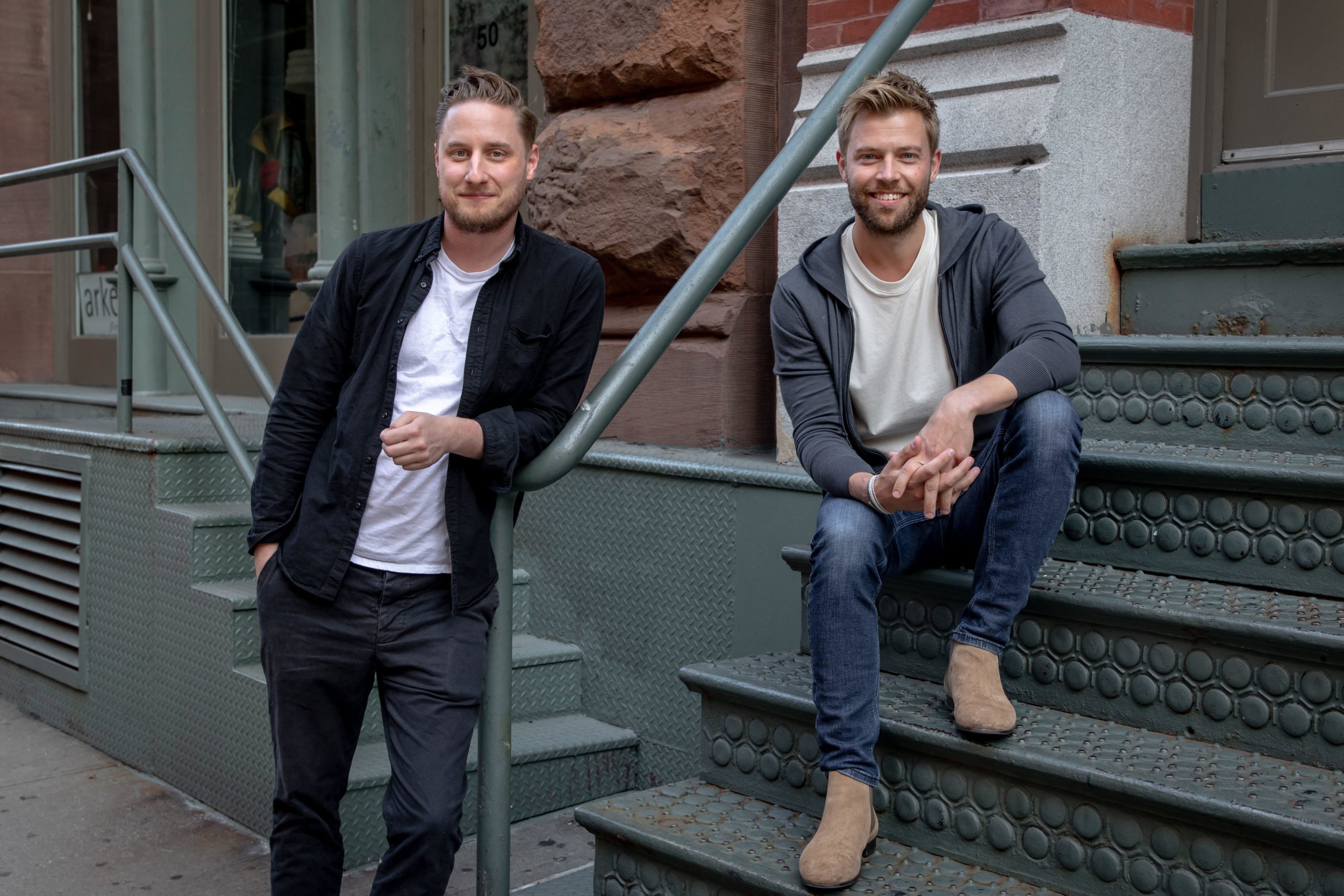
According to both co-founders, a lack of financial literacy is the biggest barrier to the stock market, not commission fees. What both co-founders understood from the beginning was that in order to build an investing app that succeeded, financial education had to be at the centre of it.
In this case study, we’ll be looking at why content and community are at the core of what Public.com does, and why this approach is integral to helping people get over the psychological barrier that comes with investing. We’ll also see how they set about creating a successful, diverse community that brought them one million users in 18 months.
The role of content and community in improving financial literacy
According to Public’s co-founders, “in order to truly democratize the stock market, you need to change its culture.” For that to happen, Public needed to rethink the entire stock market experience.
Currently, most of the stock market investing happens behind closed doors at large investing firms like Goldman Sachs, or behind day trader laptops scouring reddit and investment forums.
In order to encourage beginners to start investing, Public.com had to move away from that demographic and go further than just providing the tools: they had to also create a culture and community that would attract a new kind of consumer.
In a soon-to-be-released Market Like a Fintech episode, Katie Perry, VP of Marketing at Public.com, explains that the biggest barrier that people face when it comes to investing is psychological. Here are just several commons reasons that people often make to avoid investing:
- Investing is complicated
- Investing requires a lot of money
- Investing is for the finance bros
- Investing is risky
Jannick echoes this in a Crunchbase article: “We think the biggest problem in this industry is that many people are intimidated by it.”
Public.com realised that the main thing they had to do was to help people overcome that psychological barrier, and you do that by changing the culture. As Leif shared in a company blog post:
“Like many in our industry, we believe that investing is ripe for democratization. We happen to think the best way to achieve that aim is to build a safe space in which investors of all levels can share ideas about the companies they believe in and build their financial literacy together.”
Public.com is able to overcome many of these barriers by adding a community aspect to stock market investing. People usually feel intimidated, isolated or scared of stock market investing. But by enabling a diverse and inclusive community, people are more able to combat those feelings.
When you join a community where everyone else is investing, suddenly it doesn’t seem so intimidating. When you see people of all ages and genders investing, suddenly it doesn’t seem limited to just the finance bros. When you see people on the same financial education level as you investing, suddenly it doesn’t seem so complicated.
As for investing being “too expensive”, Public.com solves this challenge by enabling investing via real-time fractional shares — meaning you can now buy $5 worth of stock instead of committing to an entire share, which, for example, could be as much as $3,000 per unit with Amazon.
Public.com emphasises community because, as Leif says in a company blog post, they believe it is the most effective way to scale education about the stock market. In fact, as we’ll see below, Leif says himself that Public.com has two facets: the investing platform, which includes contextual educational content, and the community.
“The common perception is that democratization simply means making things more accessible, Leif adds. But democratization can’t just be about access; it’s about making investing more approachable. That approachability is created by empowering people to learn about investing and being surrounded by proper safeguards while they get their feet wet in the markets.”
That’s why Public.com added Safety Labels to potentially risky stocks, to provide members with context while they trade at their own discretion. Additionally, the app offers accessible information right alongside where they invest, like slideshows breaking down the whitepapers of different cryptos and explainers about what a stock split is.
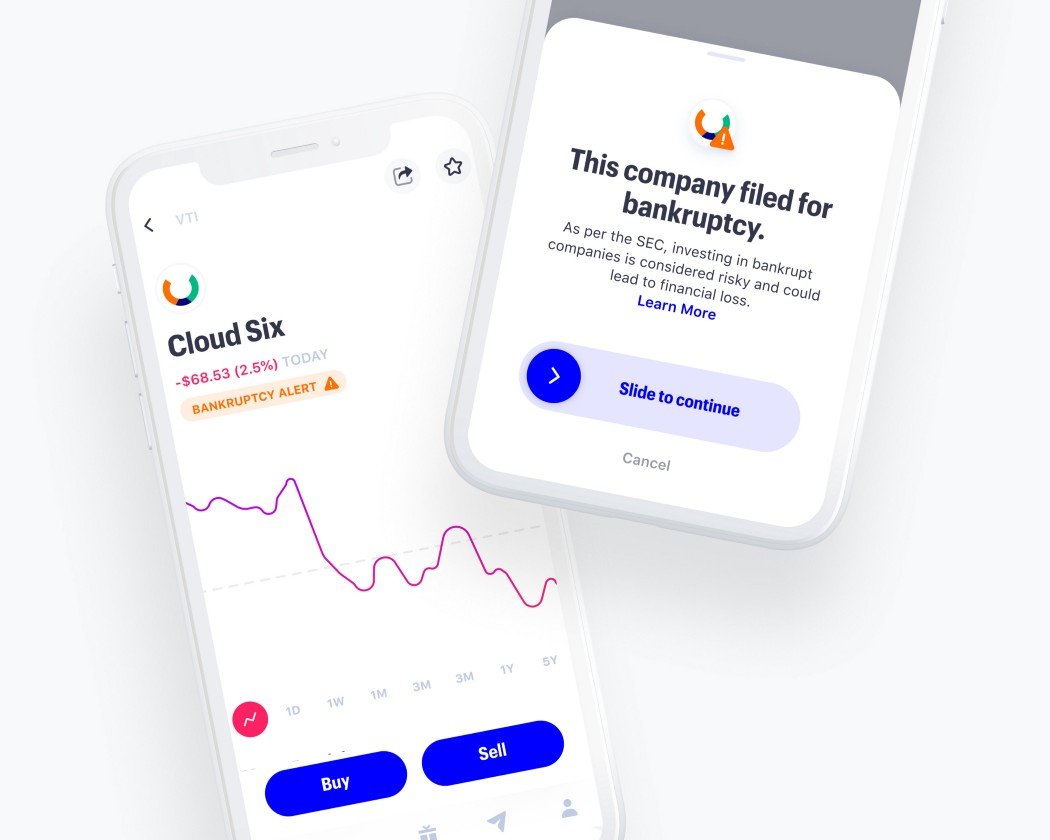
Their argument is that:
“If young people get burned during their first experience with the stock market, they might never come back.”
In a chat with Katie, she explains:
“It’s all about context and not paternalism; we want to have people make their own decisions, since no two investors are the same. But having context in the moment they're investing is really critical for this next wave of investors.”
Today, Public combines an elegant investing platform with access to thousands of stocks and funds and 11 crypto assets with an active, diverse, and friendly community of investors of more than 1M and growing; Public’s community is more than 40% female and more than 40% BIPOC, and 90% “predominantly long-term” investors.
Right from the beginning, the founders were set on community, content and brand. Despite the difficulty of building a community, Public.com has reached 1 million members within 18 months of launching.
How did they do it?
Who is Public’s target market?
The first thing to understand is Public’s target market.
In an episode with Y in the Valley, Leif explains that people who start investing are usually day traders or passive ETF investors. The problem with day trading is that it is usually focused on short-term profit. The problem with passive investing, Leif argues, is that it doesn’t really build your financial literacy.
The two co-founders saw an opportunity in the middle: investing for people who want to actively engage with their portfolio. Not to day trade, but to engage in value investing principles. In order to attract this section of the population — essentially mass market — they would need a strong community.
As Jannick explains in a TechCrunch article:
“Folks today have Slack for work, for example, and Twitch and Discord for gaming, but there isn’t really that social network for investing and that is ultimately what we think we can build with Public.”
Jannick and Leif intentionally wanted Public.com to be closer to mainstream culture (which we’ll talk about in a second), than traditional finance. That means that instead of exclusively targeting the typical trader types, they needed to target the mass market from the start.
According to a 2020 report from the platform, 55% of Public investors are self-taught, 40% are women and 45% are People of Colour (POC). Diversity is very important to them because, as Leif says:
“In the same way, a well-diversified portfolio is considered a less risky one, a diverse culture around the stock market can build stronger financial literacy and truly open the public markets to the public.”
Here’s how they targeted that demographic.
How they made it work: the product
Many of the investing communities we see nowadays are mostly for traders, which tend not to be so welcoming to new investors and are often focused on the short-term. That’s why investing might come off as a type of gambiling, rather than long-term value investing.
How did Public.com avoid building a culture that would reinforce these stereotypes?
To begin with, the platform offers real-time fractional investing to investors, making it easier for someone with a smaller budget to hold blue-chip stocks like Disney and Google. These tools help improve access to the stock market. They also introduced debit-card funding to ensure that people have the same access to a modern infrastructure, no matter where they bank. (Some banks have antiquated systems that make moving money in and out of finance apps more difficult; this feature levels the playing field.)
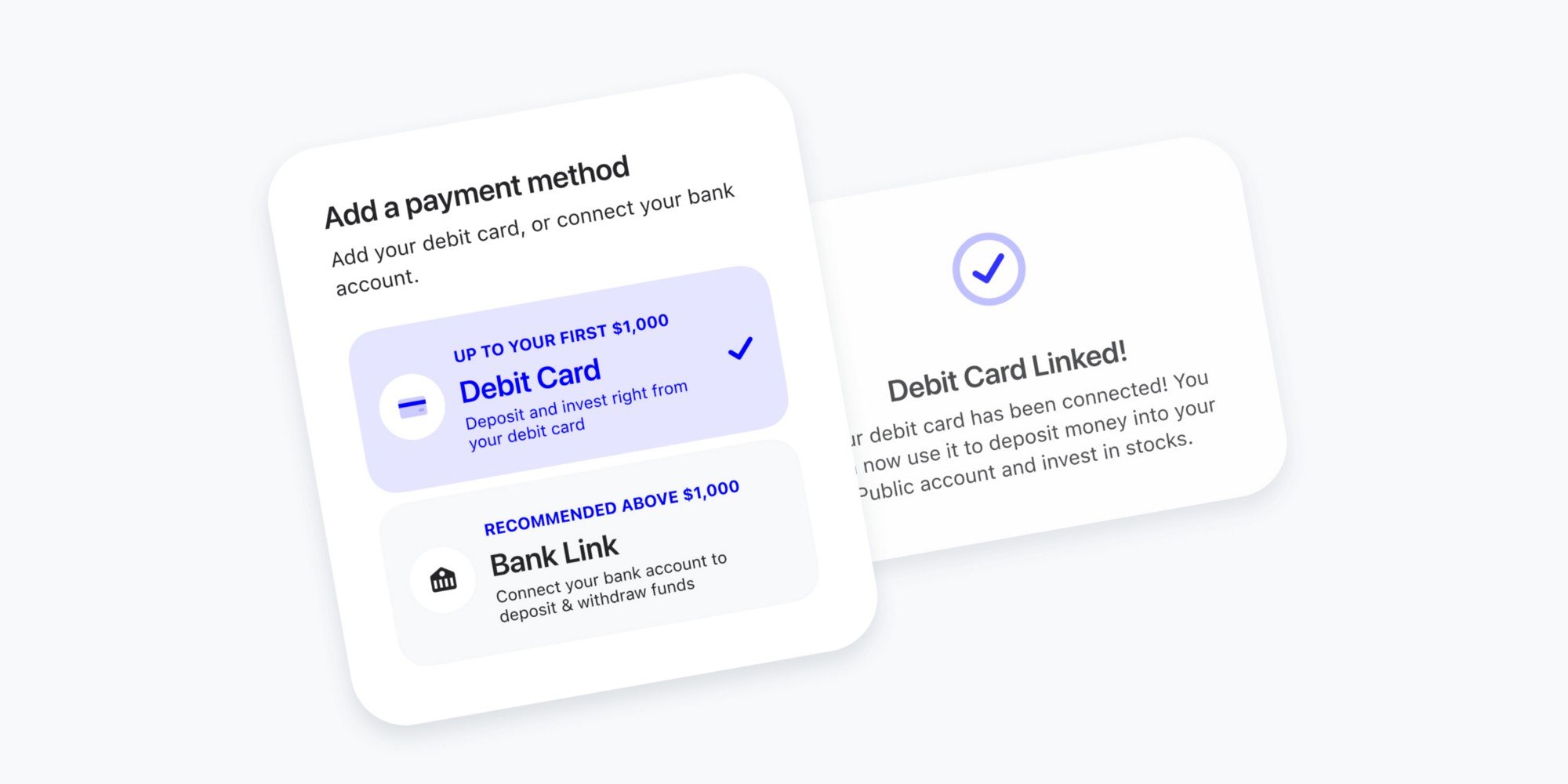
The feed is also carefully designed not to hierarchise performance. Meaning, you don’t see the top performers at the top of your feed and then build your portfolio according to their investments (that might be categorised as financial advice). Instead, the app encourages discussion between people. And since many of the community members are long-term investors, the conversations are broad: ranging from analysis of a company’s future potential to sector trends and current events.
As Katie says, the genesis of adding social features was for education. Whereas some investment apps will focus on performance, Public focuses on content. She explains that the diversity of perspective enables education:
“Somebody who has experience buying Pinterest ads and understands the Pinterest ads product will have something really valuable to say about that business — that somebody who's working in healthcare may not have.”
How they made it work: community & content
As Leif says on the Y in the Valley podcast: “It’s very easy to build social features, it’s f****ng hard to build a community.”
Very early on, they made sure to understand who they were building the app for and what kind of community they wanted to create. As mentioned above, if they had only targeted the low hanging fruit — day trader investors — they would have continued the same culture and likely not achieved the goal to change the fundamental culture around investing.
As Katie mentioned in our chat, Public.com is very intentional about creating this new culture, which means their marketing and content has to also push the boundaries. She explains that they were adamant on not using the same playbook as the investment apps that came before them, and those that are in the same space.
Community partnerships
They started off by going after creative communities and female leadership communities.
They wanted to make sure the first people they brought on the app would be broader than the existing user base of competitors. Leif says in the podcast, “you become who you acquire”.
This is even more important when you’re building a community, since you are essentially creating a culture. If you get it wrong, it’s a lot harder to change later on. That’s why Leif and Jannick were intentional about making sure that when someone joined the app, they felt welcome and surrounded by people they could relate to.
When Public was just starting out, the focus was on tapping into existing communities of people who may have not felt included in the investing experience, but might be if there was a different way to get involved. As Public.com grew, they expanded to reach more mass market customers. This translated into focusing on mainstream acquisition channels like ads, website content, videos and more.
When I asked her about targeting mass market, Katie explains why it makes sense:
“People assume that if someone's not doing it, then they’re not interested in it.”
But investing actually impacts everyone. All the food and items you buy in a grocery store are all businesses, with many of them trading on the stock market. Which is why when people understand that investing is about finding businesses and trends that you believe in as well as companies that align with your values, they are immediately interested.
As she says, “some of our best members are first time investors because they're approaching it out of a place of curiosity.”
One example of the community coming together is the hashtag #ShareYourLosses, where various users tell stories of investments that didn’t work out. Talking about mistakes is a big part of learning about a new activity. Another popular tag is #MyFirstInvestment, and it’s not uncommon for community members to show their support for new investors in the comments.
Another community play is their recent program to provide financial literacy resources to NCAA athletes. Since July 2021, US college athletes now get paid to monetize their name, image, and likeness.
In an effort to help these athletes develop as entrepreneurs and investors, Public is offering student athletes $100 in free stock in the Public app, as well as access to educational tools and training.
Diverse community members
Public’s investors and collaborators come from a range of backgrounds, not all from business and finance. Will Smith’s Dreamers VC is an early investor, and “The Breakfast Club” host and entrepreneur Angela Yee is a collaborator. The platform recently announced a partnership with NFL star Bobby Wagner given his commitment to financial literacy and inclusion.
This is because a key part of improving investing literacy is making it more approachable. Public explains that one of the ways to make the stock market more approachable is to showcase people you wouldn’t usually see actively investing, taking part in the stock market.
Leif uses the analogy: you don’t just want a personal trainer, you also want a gym buddy. Getting celebrities to participate in the stock market is like getting a gym buddy — it’s all part of the strategy to break down psychological barriers.
What happens when there’s a stock market event — think the Gamestop fiasco earlier this year — and people start panic selling? When something like Gamestop happens, it’s an immediate trending topic on the app. It means investors have somewhere safe to ask questions and get additional context on the situation, which helps people digest the situation before they take action. It builds that feeling of “we’re in it together”.
They make sure to focus on authenticity, because as Katie says in our chat, modern day consumers can sniff out authenticity pretty easily nowadays. In fact, one of the main reasons Katie joined Public was because she felt the product actually served the mission.
Brand
In order to appeal to mass market and beginner investors, the two co-founders knew they had to prioritise branding from day one. If there’s a market where brand is essential, it would be B2C, especially in high value transactions like investing.
Leif quotes Scott Belsky from “The Messy Middle” in a 2018 Medium piece:
“Developing a brand early on, even before the product, helps build a powerful values-driven narrative akin to the company having its own voice. You will find, when you’re making certain decisions that impact the customer’s experience of your product, the brand will speak to you.”
In my chat with Katie, she explains that branding is about telling stories. For Public, content is not just about what they’re posting on Instagram. It’s about resonating with their audience. Whenever they run a marketing campaign, it’s designed to make a statement about who they are and what differentiates them, such as IPOats from Airbnb — which caught the attention of founder and CEO Brian Chesky on the eve of their public debut — or a viral campaign with Michael Bolton emphasizing Public doesn’t sell members’ trades to third parties, which garnered nearly 1 billion earned impressions in a few days.

Public calls these efforts Drops, which are essentially digital or physical items they create and build. They take place every couple of few weeks, with the main goal of offering unique experiences that bring investing more into the mainstream.
One of their recent drops is a research report called “The Outsiders”, which is an in-depth look at who modern day retail investors are and aims to debunk some of the myths. They have also begun to roll out Crypto in the app.
Each “drop” is a statement about their values, products and differentiating factors. And as Katie says, it’s very much about “relevancy” at Public.com. She’s always asking herself “Why would anyone pay attention to this for more than 10 seconds?”. What is in the news? What are people talking about? They make sure to hook into mainstream culture, and then they ride that wave.
The drops are more on the campaign level rather than tactical plays. Katie says they’re not trying to fill in gaps within an editorial calendar, but instead are intentional pushes that say something about who they are. Some drops make a statement about the long term focus of the community. For example, one drop involves putting your favourite tickers on a t-shirt, with the idea being that you are reinforcing the statement of investing in companies you believe in.

As the founders say, Public gets better the more people use it, which is why they are focused so much on the community side of the service. They believe that the more financially educated people are, the better our society is for everyone.
That’s because the more people invest, the more they understand the importance of managing their money and setting something aside for their retirement and beating inflation. Leif mentions on the podcast that the more people understand how the stock market works, the more they understand the economy and how money works, therefore giving them more control of their financial situation.
Like many exciting fintech companies in this space, the goal is to democratise finance. By making investing more accessible via financial education and community, Public.com seems to be on the right path to empowering users to take control of their money — and therefore democratising finance.
The results
In 2020, the Public community grew 13X. As the community grew, so did engagement, leading to a DAU/MAU ratio of 50%. In February 2021, the community more than doubled in size and reached 1 million members, just 18 months after launch.
They’ve also successfully raised a total of $310M, including their latest series D in February this year counting Will Smith, The Chainsmokers and YouTube legend Phil DeFranco amongst their investors.
In terms of member statistics, 90% of their investors are primarily long-term investors, 40% identify as women and 45% are BIPOC.
Whereas other investing apps might focus on user numbers and average investment per customer, Public.com seems to be changing the investing landscape precisely because they focus on building a community that is more representative of society. Community could be the answer to achieve mass market stock investing.
This also brings up other questions: what other essential educational activities could be taught at scale via community? Could this model work for sex education, for example? And what about health?
And what does this mean for other B2C fintech companies? Will every B2C fintech company become a community? If the business model works, then there’s a possibility that social trading apps could be the future of the stock market.
Takeaways
If you are a fintech company that is targeting mass market users, here are some of the takeaways from this case study:
- Focus on brand early on
This might go against some advice that says you shouldn’t build a brand until you’ve found product market fit (I will be debating this on an upcoming podcast). But one would say that if your product is mass market, you really want to have a strong brand from day one.
- Focus on education — and wherever it might makes sense, community
This is especially true for the fintech world, where users need to be educated about a product before using it. Remember what Leif says: the best way to scale financial education is with community. If education is a big part of your product, then you might want to focus on a community (however, don’t force it. We’ve talked about it before on the podcast: don’t do community for the sake of it. Do it because you want to).
- You are who you acquire
This makes complete sense. Do you want to acquire users who are already engaged in similar products? Or who are completely new to it? The latter is obviously a lot harder, but if you succeed you’ll have a large part of the market to yourself.
- Don’t be scared to be creative
Yes, it’s easy to say — especially when you’ve raised a lot of money. However, it’s worth saying that being creative is especially important for mass market B2C fintech companies.
I think there’s no denying that financial education benefits society overall. Although the fintech industry is one of the biggest proponents of financial education, I feel it often becomes more talk than act. Public.com is one of the few fintech companies that are actually implementing financial education, and are a great example that fintech companies can, in fact, be a leading force in democratising finance.

